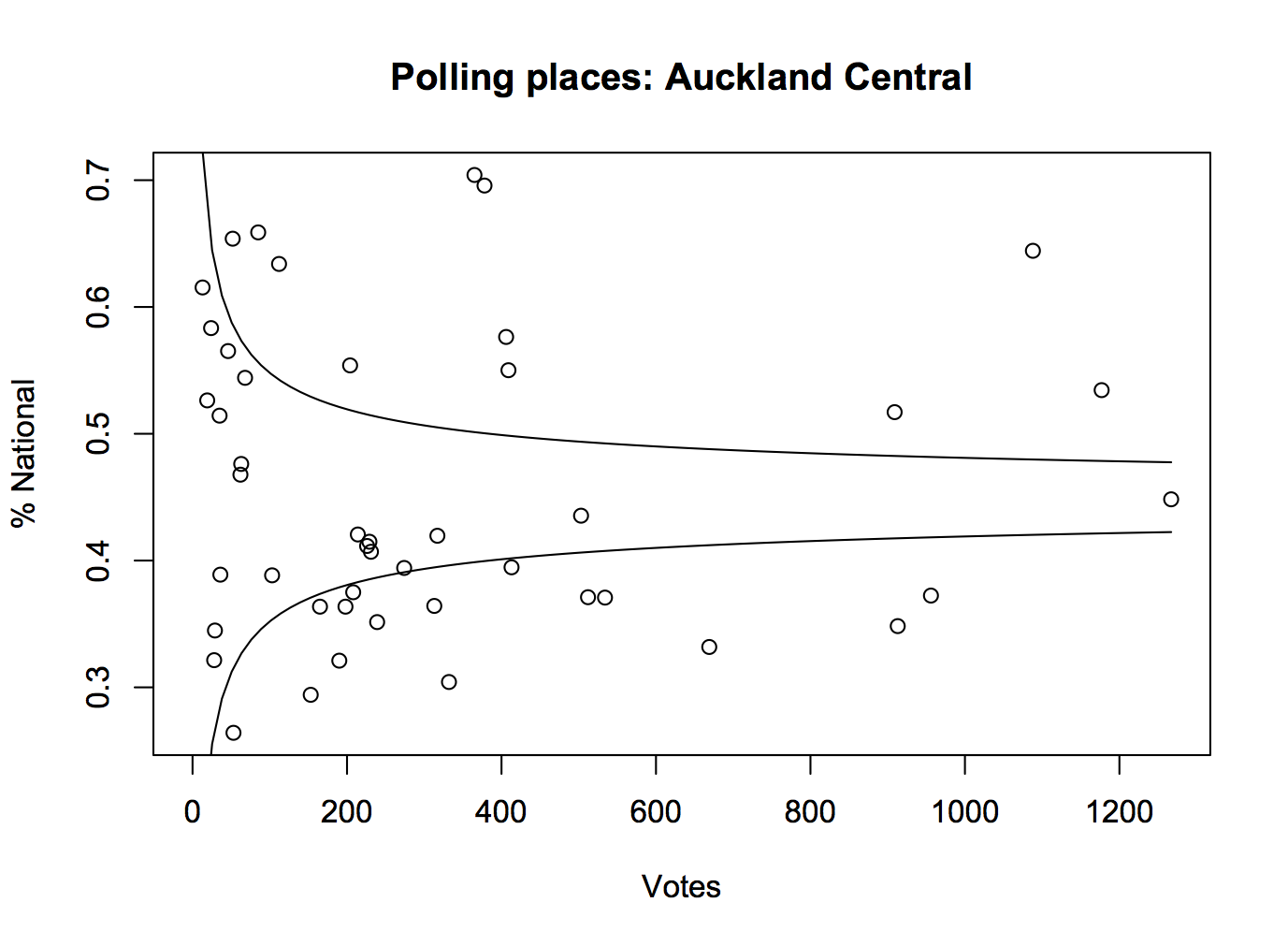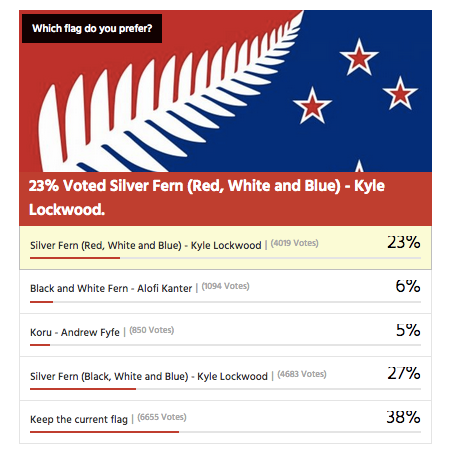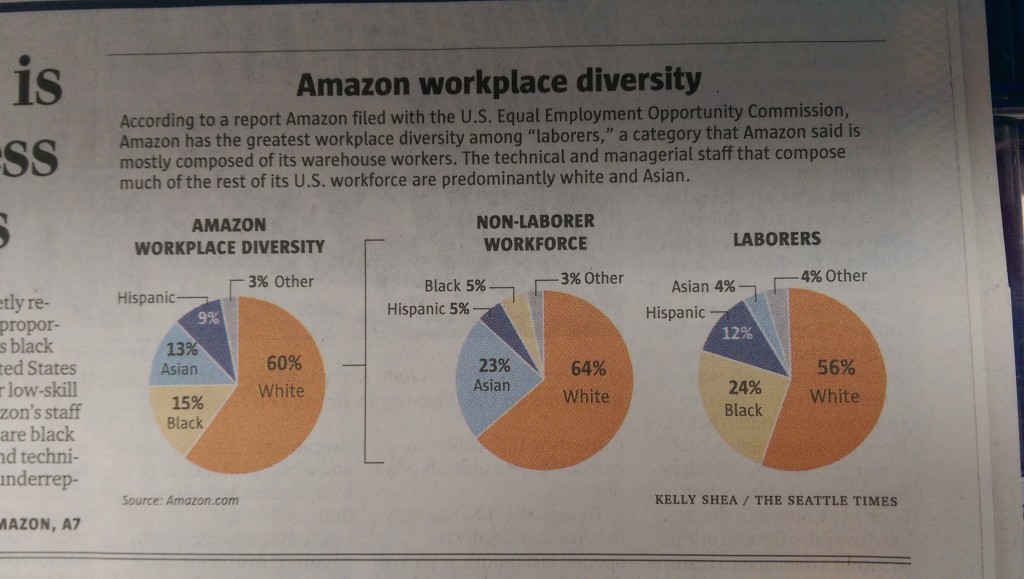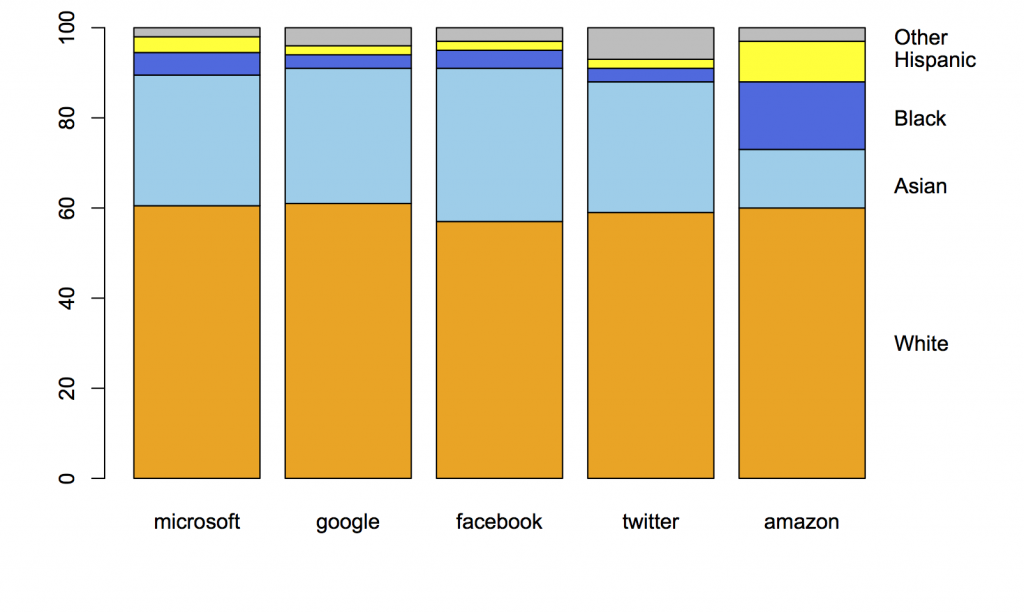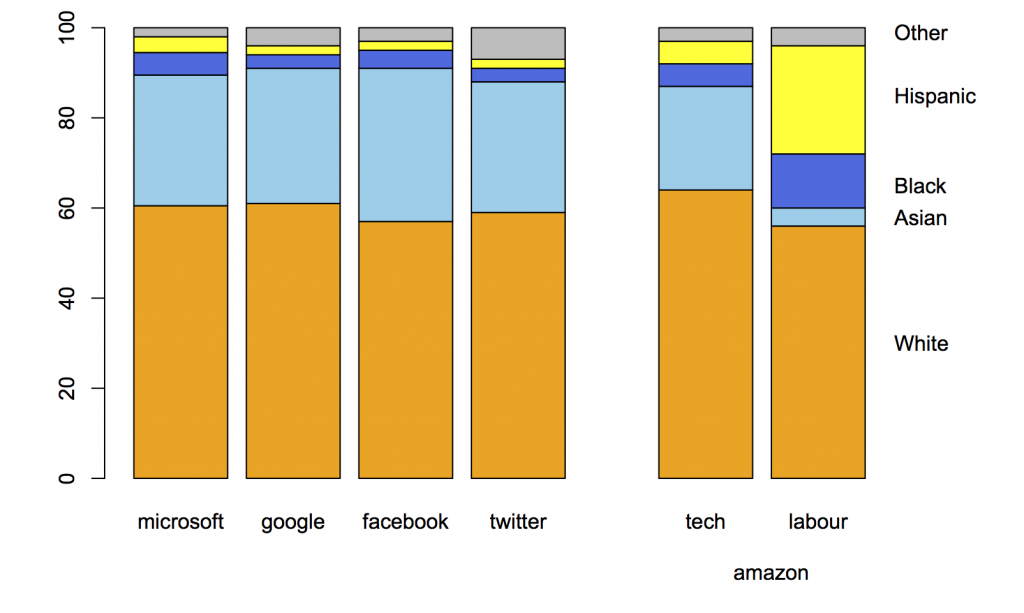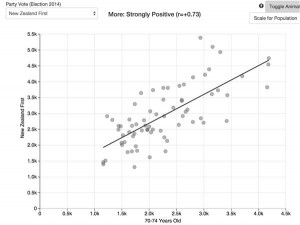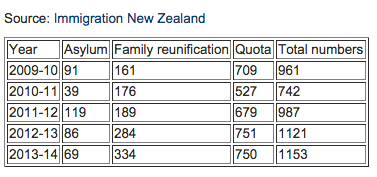Assessing popular opinion
One of the important roles played by good-quality opinion polls before an election is getting people’s expectations right. It’s easy to believe that the opinions you hear everyday are representative, but for a lot of people they won’t be. For example, here are the percentages for the National Party for each polling place in Auckland Central in the 2014 election. The curves show the margin of error around the overall vote for the electorate, which in this case wasn’t far from the overall for the whole country.
For lots of people in Auckland Central, their neighbours vote differently than the electorate as a whole. You could do this for the whole country, especially if the data were in a more convenient form, and it would be more dramatic.
Pauline Kael, the famous New York movie critic, mentioned this issue in a talk to the Modern Languages Association
“I live in a rather special world. I only know one person who voted for Nixon. Where they are I don’t know. They’re outside my ken. But sometimes when I’m in a theater I can feel them.”
She’s usually misquoted in a way that reverses her meaning, but still illustrates the point.
It’s hard to get hold of popular opinion just from what you happen to come across in ordinary life, but there are some useful strategies. For example, on the flag question
- How many people do you personally know in real life who had expressed a preference for one of the Lockwood fern flags and now prefer Red Peak?
- How many people do you follow on Twitter (or friend on Facebook, or whatever on WhatsApp) who had expressed a preference for one of the Lockwood fern flags and now prefer Red Peak?
For me, the answer to both of these is “No-one”: the Red Peak enthusiasts that I know aren’t Lockwood converts. I know of some people who have changed their preferences that way — I heard because of my last StatsChat post — but I have no idea what the relevant denominator is.
The petition is currently just under 34,000 votes, having slowed down in the past day or so. I don’t see how Red Peak could have close to a million supporters. More importantly, anyone who knows that it does must have important evidence they aren’t sharing. If the groundswell is genuinely this strong, it should be possible to come up with a few thousand dollars to get at least a cheap panel survey and demonstrate the level of support.
I don’t want to go too far in being negative. Enthusiasm for this option definitely goes beyond disaffected left-wing twitterati — it’s not just Red pique — but changing the final four at this point really should require some reason to believe the new flag could win. I don’t see it.
Opinion is still evolving, and maybe this time we’ll keep the Australia-lite flag and the country will support something I like next time.
